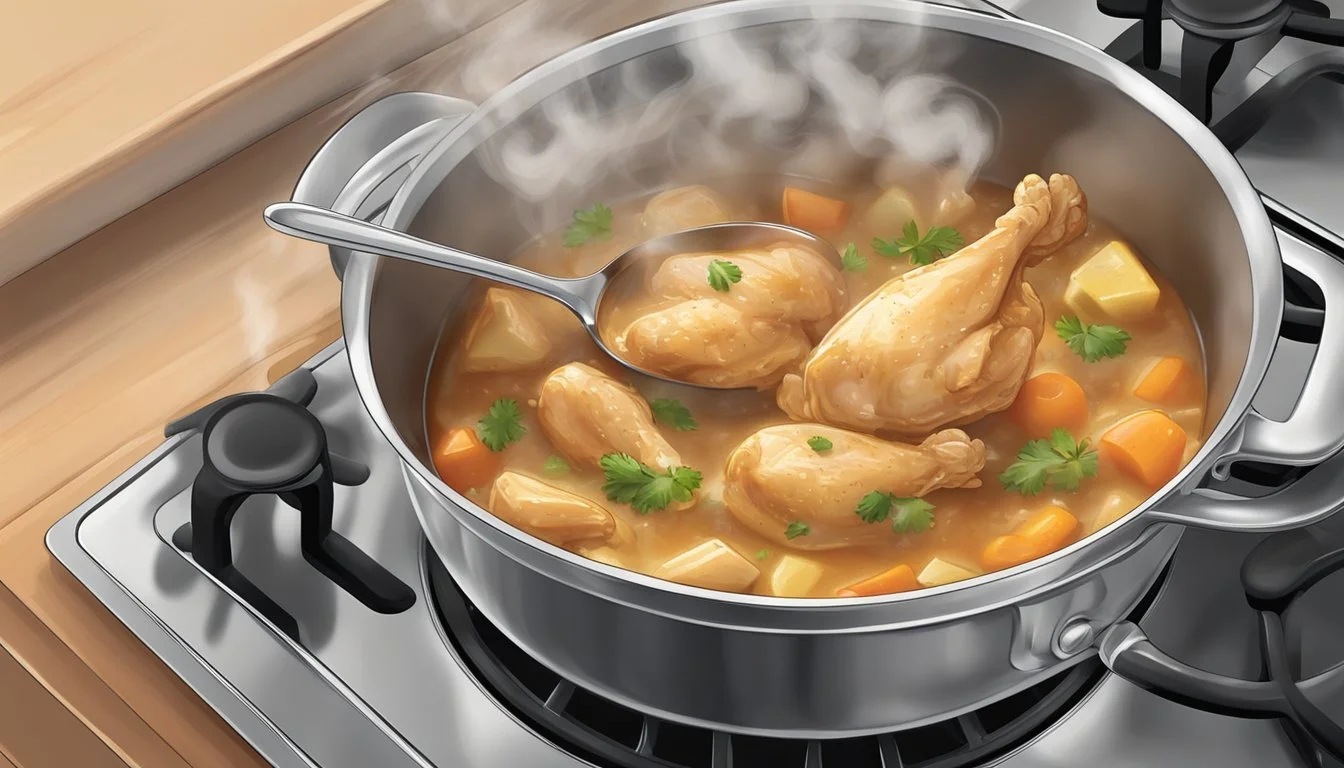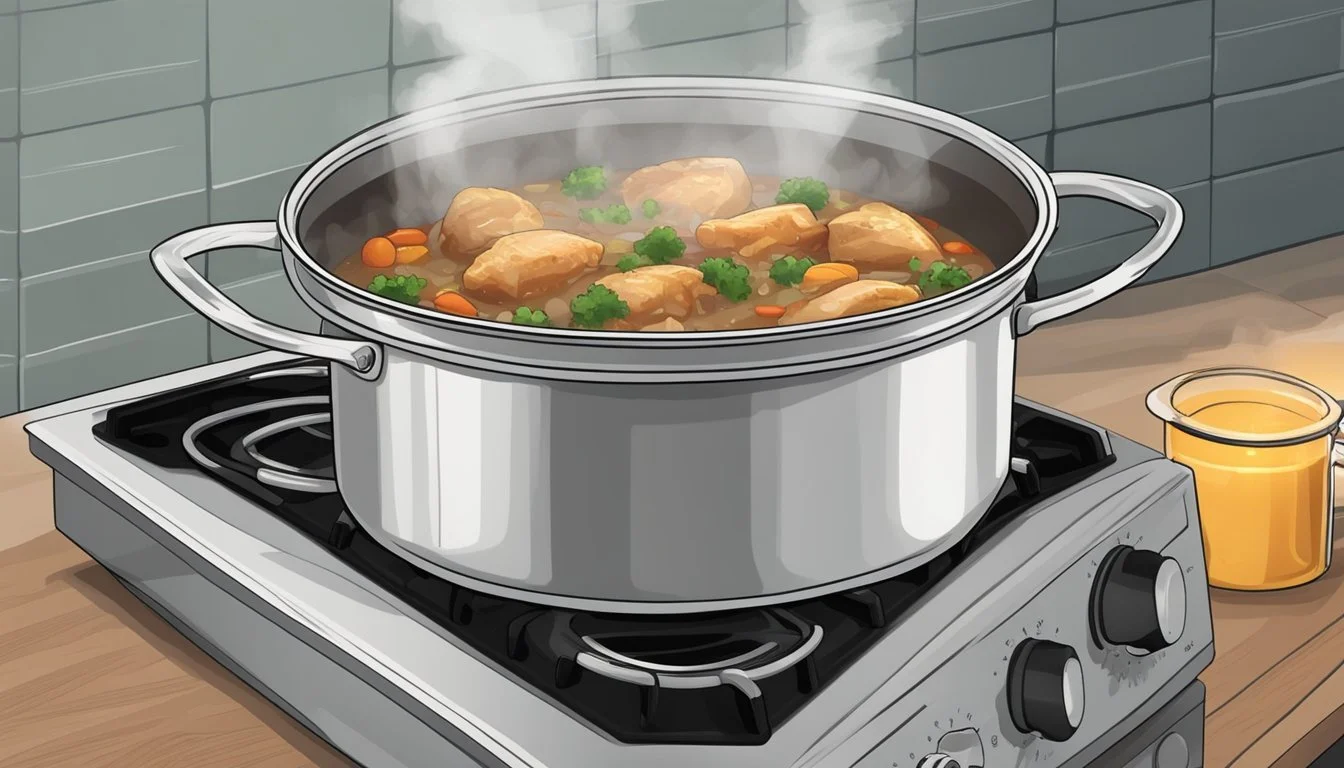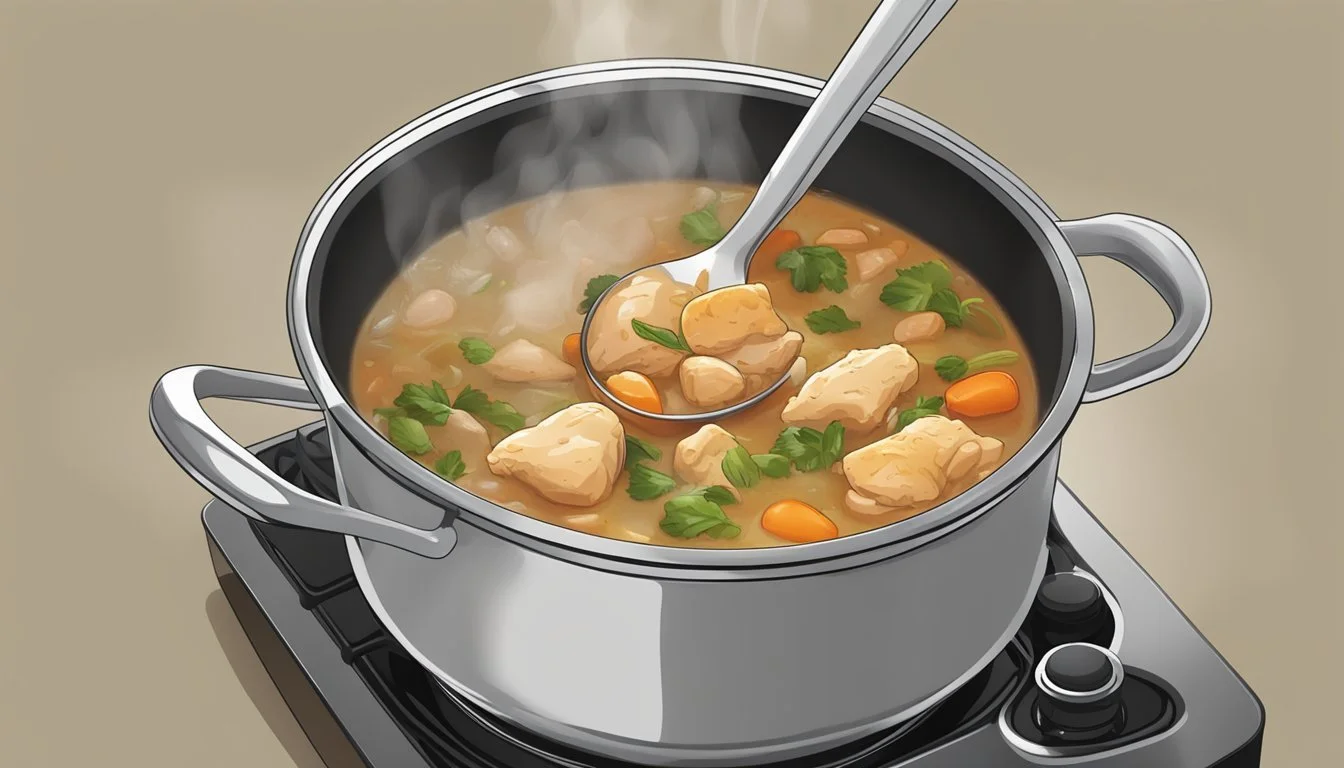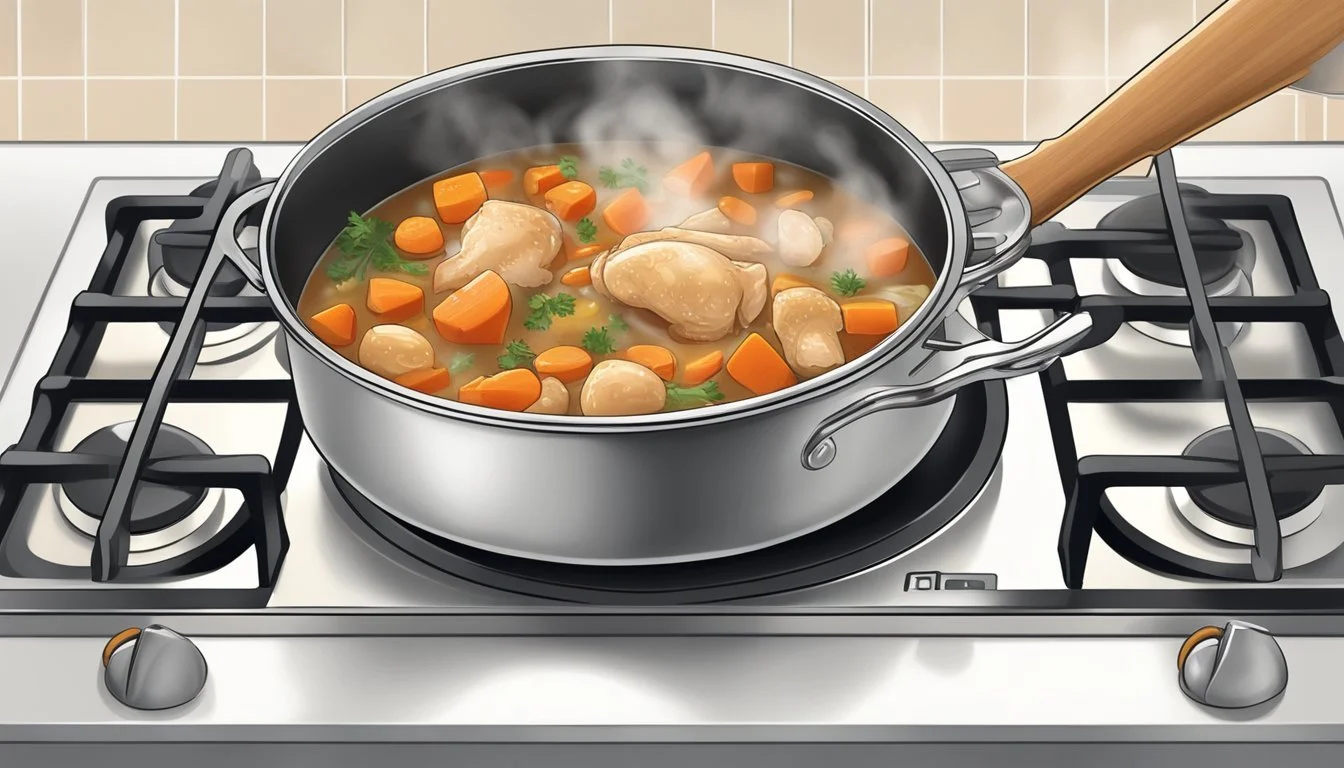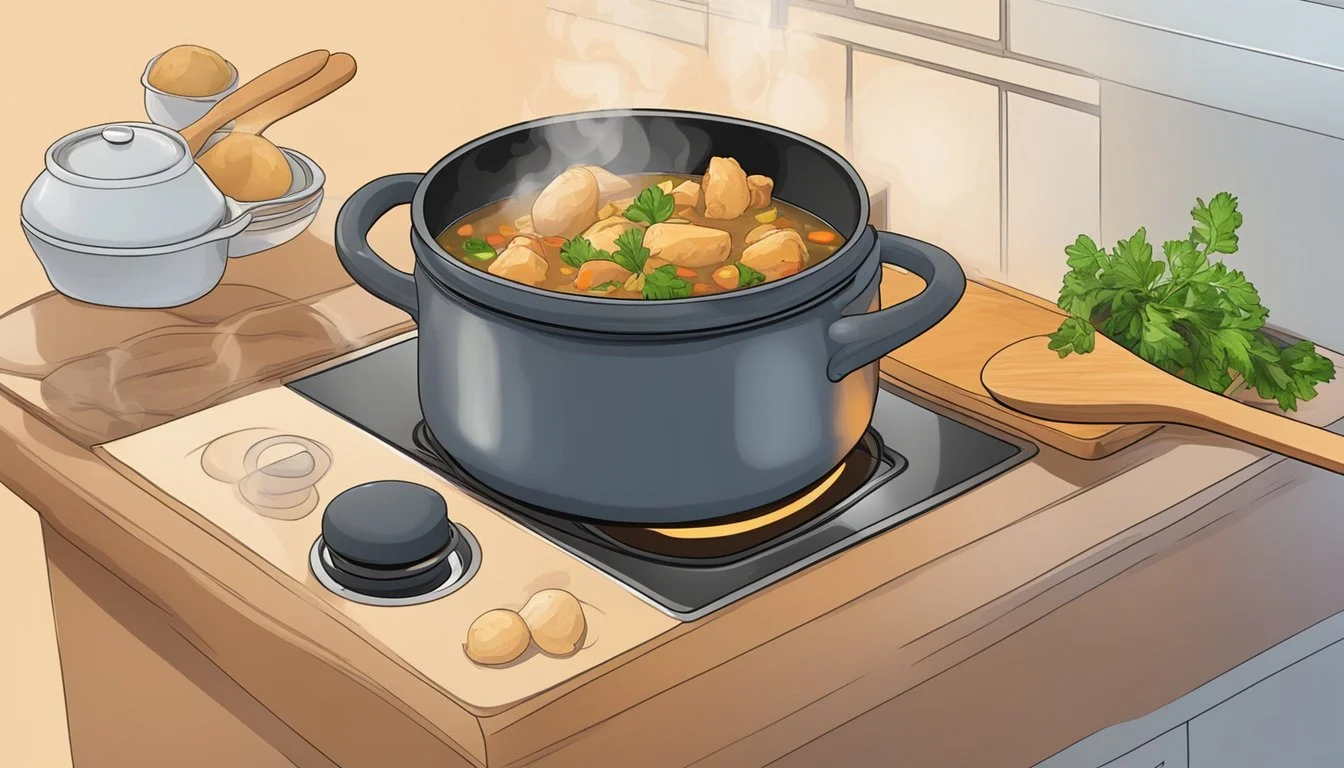How to Reheat Gluten-Free Chicken Stew
Expert Tips for Optimal Flavor
Reheating gluten-free chicken stew can be straightforward if you follow the right steps. Whether you've cooked up a hearty batch in a Dutch oven or used an Instant Pot, getting your leftovers to taste as good as when they were freshly made is key. To reheat your gluten-free chicken stew like a pro, use a microwave in short intervals, stirring periodically to ensure even heating and retention of flavors.
For those who prefer using a stovetop, reheating your stew gently over medium heat while stirring occasionally can help maintain its texture and taste. Adding a tablespoon or two of water or stock can rejuvenate the stew, making it just as savory and comforting as the first time. This method works well for maintaining the moisture balance that gluten-free recipes sometimes lack.
Creating and reheating gluten-free meals can be both easy and satisfying with these simple techniques. By understanding the nuances of your ingredients and following tried-and-true methods, you can enjoy your gluten-free chicken stew just as much the second time around.
Understanding Gluten-Free Chicken Stew
Gluten-free chicken stew is a hearty and nutritious dish that is free from gluten, making it suitable for those with gluten sensitivities. This stew typically incorporates chicken, a variety of vegetables, and a flavorful broth.
Ingredients Breakdown
The main ingredient in gluten-free chicken stew is chicken, which can be light or dark meat, depending on preference. Potatoes, carrots, and celery are common vegetables included for their texture and nutritional value. The onion adds depth to the flavor, while fresh herbs like thyme and bay leaf enhance the aroma and taste.
A gluten-free flour blend is often used to coat the chicken or thicken the stew. The gluten-free element ensures the dish is safe for those with gluten intolerance. Chicken broth serves as the base, providing a savory liquid in which all ingredients cook.
Benefits of Gluten-Free Stew
Gluten-free chicken stew offers multiple benefits. The stew is suitable for individuals with celiac disease or gluten intolerance, allowing them to enjoy a comforting meal without health risks. The inclusion of various vegetables like carrots, celery, and potatoes ensures the dish is rich in vitamins, minerals, and fiber.
Additionally, the chicken provides a high-quality source of protein, essential for muscle repair and growth. The use of fresh herbs like thyme and bay leaves not only boosts flavor but also adds antioxidants. The stew is also versatile, allowing adjustments to ingredients based on personal taste or dietary needs.
Preparation Before Reheating
When reheating gluten-free chicken stew, proper preparation is crucial for maintaining flavor and texture. Key steps include correct storage practices, effective thawing methods, and ensuring the stew was initially cooked and cooled safely.
Storing Practices
Proper storage is essential to keep chicken stew safe and flavorful. Store leftovers in airtight containers to prevent contamination and maintain moisture. Refrigerate the stew if you plan to consume it within 3-4 days. For longer storage, freeze it. Label containers with the date of storage to track freshness. When using freezing methods, divide the stew into single servings for easier reheating later on.
Proper Thawing Techniques
Thawing frozen chicken stew correctly is vital. The safest method is to move the stew from the freezer to the refrigerator. Allow it to thaw slowly over 24 hours. For quicker thawing, use the defrost setting on a microwave, but stir frequently to ensure even thawing. Avoid thawing at room temperature, as this can lead to bacterial growth, compromising food safety.
Initial Cooking and Cooling
Proper initial cooking and cooling impact the quality of reheated stew. Ensure the chicken is cooked thoroughly to a minimum internal temperature of 165°F (74°C). After cooking, cool the stew quickly by transferring it to shallow containers before refrigerating or freezing. Rapid cooling prevents bacterial growth and keeps the stew safe for future consumption. Stirring occasionally while it cools down further speeds this process.
Selecting the Right Reheating Method
Reheating gluten-free chicken stew requires care to maintain its rich flavors and moist texture. Different methods offer various advantages and are suited to specific circumstances.
Stovetop Reheating
Reheating on the stovetop allows for controlled heating and is ideal for those who prefer to monitor the process. Use a saucepan or a Dutch oven. Place the stew in the pot and add a small amount of water or gluten-free broth if it looks too thick.
Heat over medium-low heat, stirring occasionally to ensure even reheating. Target 165°F, ensuring the chicken is heated through while maintaining the stew’s consistency. This method works well for one-pot dishes like chicken stew.
Oven-Based Reheating
Oven-based reheating is suitable for large portions and those who prefer a hands-off approach. Preheat the oven to 350°F. Transfer the stew to an oven-safe dish and cover with foil to prevent drying out.
Bake for about 25-30 minutes or until the stew reaches 165°F. This method benefits from the even heat distribution, making it a reliable option for gluten-free chicken stews. If the stew thickens too much, a bit of water or broth can be added.
Using a Microwave
Microwaves are convenient for quick reheating but can unevenly reheat dense stews. Transfer the stew to a microwave-safe container. Cover with a microwave-safe lid or plastic wrap with small vent openings.
Heat on medium power for 2-3 minutes, stir, and then heat in 30-second intervals until reaching 165°F. Stirring ensures even heating and prevents overcooking parts of the stew. Monitor closely to avoid drying out the chicken. A little water or broth can help maintain moisture.
Slow Cooker Considerations
For minimal effort and maximum flavor retention, using a slow cooker is effective. Transfer the stew into the slow cooker and set it to the low setting. Heat for 2-3 hours, stirring occasionally.
This method is excellent for those with time and who want to avoid constant attention. The slow cooker ensures even heating while keeping the chicken and vegetables tender. This approach preserves the integrity of the gluten-free ingredients in the stew.
Temperature and Timing for Reheating
Reheating gluten-free chicken stew requires careful attention to temperature and timing to ensure both safety and flavor. Properly set temperatures and accurate timing prevent dry or overcooked stew.
Optimal Reheating Temperature
For reheating gluten-free chicken stew, maintaining a consistent internal temperature of 165°F (74°C) is crucial. This ensures that any bacteria present are eliminated, keeping the food safe to eat.
Using a food thermometer, check the stew temperature frequently. This approach is applicable across different reheating methods like stovetop, microwave, and oven.
In an oven, preheat to 350°F (175°C). When using a microwave, set it at medium-high. If reheating on the stovetop, use medium heat to avoid burning.
Timing for Various Reheating Methods
Microwave:
Microwave on medium-high in short intervals of 1 minute. Stir the stew after each interval, ensuring even heat distribution. Total microwave time can range from 3-5 minutes depending on the microwave's power.
Oven:
In an oven preheated to 350°F (175°C), reheat the stew for 20-25 minutes. This allows for even heating. Stirring midway through the reheating process helps maintain an even temperature.
Stovetop:
On the stovetop, reheat the stew on medium heat. Stir frequently, ensuring the stew heats evenly. This method typically takes about 10-15 minutes. Adjust time based on the stew's quantity and consistency.
Accurate timing and temperature control are key to reheating gluten-free chicken stew safely and retaining its original texture and flavor.
Tips for Preserving Flavor and Texture
When reheating gluten-free chicken stew, it is essential to maintain its flavor and texture. Careful handling of herbs, spices, liquids, and vegetables ensures a delicious and satisfying meal.
Adding Freshness with Herbs and Spices
Adding fresh herbs and spices can rejuvenate the flavor of reheated stew.
Fresh basil, parsley, or thyme can be stirred in just before serving. This not only enhances the dish's taste but also its aroma. Using ground spices like cumin or paprika can elevate the stew's flavor profile. Be careful to add these seasonings slowly, tasting as you go, to avoid overwhelming the dish.
Adjusting Liquid Content During Reheating
Maintaining the right liquid content is crucial for achieving proper texture in the stew.
When reheating, add a small amount of liquid like chicken stock or water to prevent drying out. This refreshes and preserves the stew's consistency. It's best to add liquid a little at a time, as too much can dilute the flavors. Stirring periodically helps ensure even heating and integration of added liquids.
Preventing Overcooking of Vegetables
Overcooked vegetables can turn mushy and lose flavor.
To avoid this, use medium heat and gentle stirring. It's effective to reheat the stew in short intervals, especially in the microwave, checking frequently. Consider adding fresh vegetables for a contrasting texture. If using a stovetop, a simmer is preferable to a rapid boil to keep the vegetables tender but intact.
Serving Suggestions and Pairings
When reheating gluten-free chicken stew, thinking about what to serve alongside can elevate your meal. Consider incorporating a mix of robust accompaniments and delightful wine pairings for a well-rounded and enjoyable dinner.
Accompaniments for Chicken Stew
Rice: Serving chicken stew over a bed of fluffy rice can enhance the dining experience. The rice absorbs the savory flavors, making each bite rich and satisfying. Choose a light, aromatic rice, such as jasmine or basmati, for the best results.
Gluten-Free Bread: A slice of fresh, crusty gluten-free bread works perfectly for dipping into the stew. This not only adds texture but also complements the hearty flavors of the dish. You can opt for types like baguette or sourdough to add variety to the meal.
Vegetables: Steamed or roasted vegetables, such as carrots, green beans, or broccoli, balance the stew's richness. These sides add color and nutrition without overwhelming the stew's flavors. Season them lightly with salt, pepper, and a splash of olive oil.
Wine Pairings
Sauvignon Blanc: This white wine's crisp and refreshing notes can cut through the richness of the chicken stew, providing a balanced palate. Its hints of citrus and green apple lighten the meal, enhancing the overall dining experience.
Chardonnay: For those who prefer a fuller-bodied wine, chardonnay is an excellent choice. Its creamy texture and nuances of oak and vanilla pair well with the hearty stew. It complements the flavors without overpowering them.
Red Wine: If you prefer red wine, opt for a light to medium-bodied option such as Pinot Noir. This wine's subtle tannins and fruity undertones meld beautifully with the savory chicken stew, creating a harmonious pairing.
By considering these accompaniments and wine pairings, you can transform a simple reheated stew into an inviting meal.
Navigating Dietary Restrictions
When reheating gluten-free chicken stew, accommodating various dietary restrictions such as dairy-free requirements and other allergens is crucial. The guidelines below provide specific adjustments to ensure the stew remains safe and delicious for all.
Dairy-Free Modifications
To ensure the chicken stew is dairy-free, use olive oil or coconut oil instead of butter for sautéing vegetables and chicken. These fats provide a rich flavor without dairy.
Use coconut milk, almond milk, or other non-dairy milk alternatives to add creaminess. Avoid using soy milk if soy is a concern.
Finally, be mindful of any pre-made broths and sauces, as some contain hidden dairy ingredients. Reading labels meticulously helps maintain a completely dairy-free dish.
Additional Allergen Considerations
Other common allergens to consider include nuts, soy, and shellfish. For a nut-free option, choose sunflower seed milk or rice milk instead of almond milk.
If soy allergies are a concern, avoid soy sauce and use coconut aminos or tamari sauce instead.
Ensure the chicken and other ingredients are free from cross-contamination with shellfish or other allergens during preparation. Using separate cooking utensils and thorough cleaning can prevent any accidental exposure to offending allergens.
Advanced Techniques and Variations
Consider adapting the recipe to cater to different dietary needs and personal preferences. Explore creative twists to add fresh flavor and excitement to traditional gluten-free chicken stew.
Adapting the Recipe for Dietary Preferences
For those with strict dietary needs, this gluten-free chicken stew can easily be made dairy-free by using olive oil instead of butter.
Vegetarian Option: Substitute chicken with hearty vegetables like mushrooms, eggplant, and potatoes. For protein, consider adding chickpeas or tofu, ensuring all ingredients are gluten-free.
Low Sodium Adaptation: Use low-sodium broth and limit added salt. Enhance the flavor with fresh herbs such as thyme, rosemary, and parsley, which complement the dish without overwhelming it.
Creative Twists on Traditional Chicken Stew
Adding Leftover Chicken: If you have leftover chicken, shred it and add it at the end of cooking to reheat gently. This keeps the chicken tender and avoids overcooking.
Flavor Boosters: Enhance your stew with umami-rich ingredients like mushrooms or a splash of gluten-free soy sauce. Incorporate these while sautéeing the vegetables.
Herb Variations: Experiment with fresh herbs such as cilantro or basil for a unique twist. Adding a touch of lemon zest can also provide a bright contrast to the rich flavors.
By exploring these advanced techniques, you can create a versatile and personalized gluten-free chicken stew that suits a range of tastes and dietary requirements.
Proper Cooling and Storage Post-Reheating
After reheating gluten-free chicken stew, proper cooling is essential to prevent bacterial growth.
Step 1: Cool Quickly
Transfer the stew into shallow containers to help it cool faster. Avoid leaving it at room temperature for more than 2 hours.
Step 2: Refrigerate or Freeze
Refrigerate leftovers in airtight containers at or below 40°F (4°C). For longer storage, freeze the stew.
Storage Tips
Label containers with dates.
Use within 3-4 days if refrigerated.
Freeze for up to 3 months for best quality.
By following these practices, reheated gluten-free chicken stew can be safely stored and enjoyed at a later time without compromising quality or safety.

